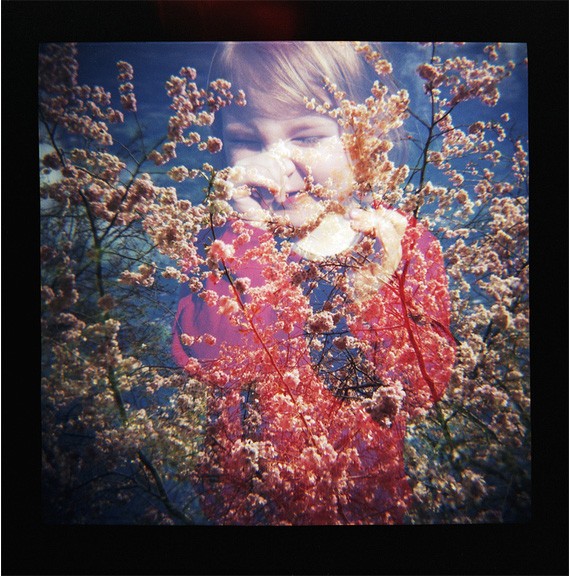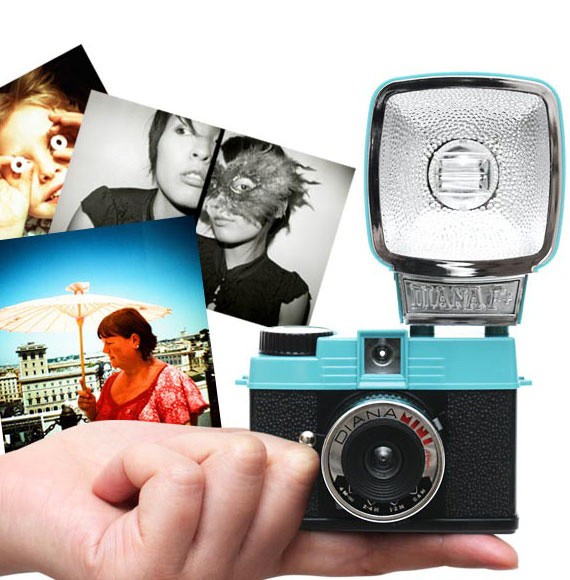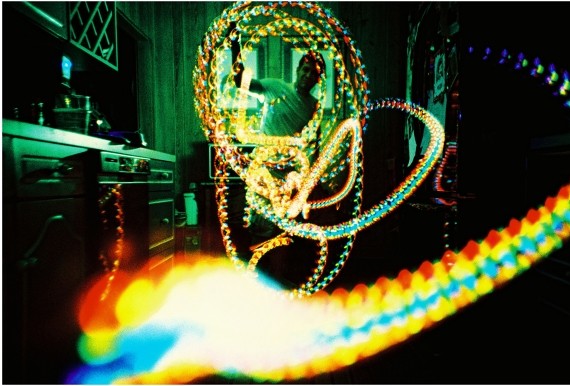I once read from a book ‘Manual cameras are romantic, digital cameras are democratic’. To me it evoked the romanticism of old vintage film and polaroid cameras. Off colors, wrong focus, vignetting effect–these is what traditional photography defines as a ‘bad picture’, but for lomographers, that isn’t the case.
They use these ‘wrong’ settings to their advantage, creating one of a kind photos.

What is Lomography?
Table of Contents

Image taken by Ethermoon
Lomography is a pretty recent type of photography invented by the Lomographic Society, founded in the early nineties in Austria. The founders first experimented with Lomo LC-A, a cheap Russian toy camera. They were taken by the unique, high contrast photos with vignettes and soft focus. The original lomo cameras are the LC-A, Holga, Fisheye, Colorsplash and Supersampler (more on that later…)
According to Lomography.com, There are 10 rules that define ‘lomography’:
- Take your camera everywhere you go.
- Use it any time – day and night.
- Lomography is not an interference in your life, but a part of it.
- Try to shoot from the hip.
- Approach the objects of your Lomographic desire as close as possible.
- Don’t think.
- Be fast.
- You don’t have to know beforehand what you captured on film.
- Afterwards either.
- Don’t worry about any rules!
Lomography is considered an art movement; as there are now several stores, galleries, groups, competitions and embassies around the world aiming to spread and support the art. The Lomographic Society International headquarters is in Vienna, Austria, but it maintains a website where lomographers can purchase their cameras, interact with fellow photographers, share their photos and techniques, etc.

Taken by scarecrowindisguise with a Lomography Diana F+ loaded with Lomography X-Pro Slide
Pros and Cons of Lomography
Ironically, the disadvantages of lomography can be used as an advantage, and vice versa.
Light Leaks
Depending on who you’re talking to, light leaks can be a good thing or a bad thing. Some lomographers love their light leaks, while some despise them so much they tape the heck out of their camera.

Photo from
On the plus side, light leaks do create trippy effects. They can transform mundane photos into otherworldly captures.

Image by Angelwulf, taken with her LC-A camera and Kodak Colorplus film
But then again, they can also ruin the photo. Examples are light leaks that get in the way of the subject, or even entirely ruin the whole photo.

Massive light leaks (Taken by Superlighter using a Braun Paxina and Agfa Portrait 160 film)
Unpredictability
This is what makes lomography so fun–and so frustrating. Lomo cameras are highly unpredictable–like it has a life of its own. That’s why most of the beautiful lomo photos are ‘happy accidents’.
So if both a professional and a beginner in photography takes up lomography for the first time, both are likely equal in the field of lomography. Coming up with beautiful photos taken by toy cameras require you to understand your camera, develop a friendship with them and this understanding will take some time and practice.

Double Exposure shot taken by kylewis using the Original Diana 151 with expired film
Plastic lens
The lens is made out of plastic and not glass, so the lens is largely responsible for the quality of the images: vignettes, saturated colors, off hues, and the like.

Taken by kernow_and_cambria with a Lomo LC-A+ with Fuji Sensia 400

Taken by mephisto19 with a Lomo LC-A+ loaded with Kodak EBX
The best way to learn about working with available light is by trying a lomography camera. These toy cameras work best in broad daylight, where it’s sunny and warm. Most lomography cameras work poorly indoors, cloudy or at night, except if you switch it to bulb mode or if you have flash.
Is Lomography worth it’s hype?
The Lomographic Society is criticized for their overpricing, one point saying that the company sells their cameras, film and equipment for far more than it’s worth. The LC-A is sold for aroud US $30, when the first lomographers bought it, but now they sell for around US $250.
The original Diana+ was sold for only US $1, but the new, updated version by Lomography sells for US $50.
Aside from Lomography, there are now recent companies that now sell toy cameras, often much, much, cheaper, like the Four Corner Store.
Love it or hate it, lomography is fun and addicting, and I still buy the cameras and the expensive film even if i know I’m being ripped off. So even if it’s an overpricing venture, they’re still making good money out of it.
How to Get Started?
1. Choose your weapon
There are many different kinds of lomography cameras! How do you choose which one is best for you?

Different cameras have different uses, features and effects. For example, the Fisheye takes a 170-degree view around you, creating an almost circular image. The Supersampler takes four photos within 2 seconds or in 0.2 seconds.
Colorsplash has some really colorful flashes, and the Rocket Sprocket takes wide shots with the sprockets in them.

Different effects of different lomography cameras
Do your research and determine the type of photos you want to achieve.

2. Choose your film
Also note that some lomo cameras use different kinds of film. The Holga and the Diana F+ uses 120 film, which has to be done in a film specialty store.
If you don’t want the additional expenses and hassle, opt for 35mm film cameras (Fisheye, Diana Mini, Superheadz, etc.) where you can have it developed in any drug store. There are also 110 film cameras, a smaller and even rarer film (thus harder to develop).
For beginners, we recommend you choose the regular 35mm film first. Don’t buy expensive film just yet–if it’s your first time, expect to fail miserably. If your rolls come out with nothing, don’t give up just yet–it’s part of the learning process.
Thus, buy cheap rolls of film first to use as your test roll. 400 iso film is great for most conditions. You can have your rolls cross-processed to give that saturated, high contrast result popular in lomography.
4. Experiment with different effects!
Long exposures, double exposures, red scaling, these are just some things you can do to create funky pictures with your lomo camera.

Red scale effect. Image by Rachel Arandilla with Holga 120CFN using expired Solid Gold Film
Multiple exposures are a fun effect in lomography you can try. This feature is often not available in regular film cameras and film SLRs, since the shutter and forward button is locked together, requiring you to move forward to take the next shot.

Taken by doubleswithlomodirk using Kodak EIR Infrared

Long Exposure shot. Taken by mightymouse with a Lomo LCA+ RL loaded with Kodak EBX (35mm, 100 iso) film
Try to have fun and play with the ‘rules of lomography’ or break them. Instead of loading the 120 film into your Holga, improvise by using a 35mm instead. There are unlimited options.
So you’ve already learned a thing or two about photography. You finally got a few brag-worthy shots. Many lomographers enjoy creating lomo walls. These lomo walls look really amazing and psychedelic, all thanks to the funky colors lomography shots create.

You can also share your lomo shots online! You can register and log in at Lomography, where you can upload and share your lomo shots. Other websites where you can share your lomo shots are Flickr or Deviantart.
You can also check out other people’s shots, so you can be inspired by them. Read blogs to learn new lomo techniques, or check the latest news to launches of new lomo cameras, film and other products. There are also online competitions available where you can win prizes.
This post may contain affiliate links. See our disclosure about affiliate links here.






